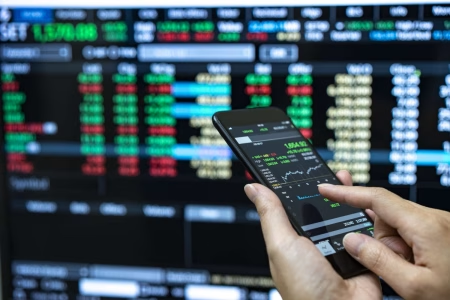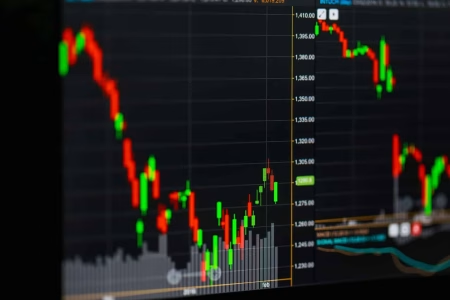In the fast-paced world of currency trading, staying ahead of market trends is essential. One of the most popular tools traders use to gain a competitive edge is Forex trading signals. Whether you’re a beginner or an experienced trader, understanding how Forex signals work and how to use them can greatly enhance your trading strategy.
This guide explores what Forex trading signals are, how they’re generated, the different types available, and how to use them effectively to make better trading decisions.
What Are Forex Trading Signals?
Forex trading signals are recommendations or alerts that indicate the optimal time to buy or sell a currency pair. These signals are based on various forms of analysis—technical, fundamental, or both—and are designed to help traders make informed decisions without spending hours analyzing charts or news events.
Signals typically include:
- The currency pair to trade (e.g., EUR/USD)
- Direction (buy or sell)
- Entry price
- Stop-loss level
- Take-profit target
Some services also include supporting analysis, charts, and trade rationale.
How Forex Signals Are Generated
There are two main types of Forex trading signals: manual and automated.
1. Manual Forex Signals
Manual signals are generated by human analysts or professional traders who monitor the market and send out trading alerts based on their expertise. These signals are often based on:
- Technical indicators (e.g., Moving Averages, RSI, MACD)
- Price action and chart patterns
- Economic news and macroeconomic events
2. Automated Forex Signals
Automated signals are generated by algorithms or trading bots that use pre-defined criteria to analyze market data. These signals are often based on:
- Quantitative models
- AI or machine learning algorithms
- Real-time price movement and historical data
Each method has its pros and cons. Manual signals can provide deeper insight and adaptability, while automated signals offer speed and consistency.
Types of Forex Trading Signals
Forex signals can vary based on the type of information they provide and how they’re delivered. The most common categories include:
A. Free vs. Paid Signals
- Free Signals:
Offered by brokers or trading communities to attract new users. They may be less reliable or limited in scope.
- Paid Signals:
Provided by professional analysts or signal service providers, often offering more detailed analysis and higher accuracy.
B. Entry and Exit Signals
Some signals focus strictly on when to enter or exit a trade. These are ideal for traders who prefer to manage their trades themselves.
C. Full Trade Setup Signals
These include complete trade plans with entry, exit, stop-loss, and take-profit levels. They’re perfect for traders who want a hands-off experience.
Delivery Methods for Forex Signals
Forex trading signals can be delivered in various ways depending on the provider:
- SMS/Text messages
- Email alerts
- Mobile apps
- Telegram/WhatsApp groups
- Web dashboards or trading platforms
Real-time delivery is crucial, especially for short-term trades like scalping or day trading, where timing can significantly affect profitability.
Benefits of Using Forex Trading Signals
1. Time-Saving
One of the main advantages of using Forex signals is the time saved on market analysis. Traders can execute trades based on expert insights rather than spending hours analyzing charts.
2. Ideal for Beginners
Forex trading can be overwhelming for newcomers. Signals provide a practical way to learn by example while still participating in the market.
3. Reduced Emotional Trading
Signals follow a predefined strategy, helping traders avoid impulsive decisions driven by fear or greed.
4. Access to Expert Analysis
Many signal providers are seasoned professionals or use advanced algorithms. This gives traders access to insights they might not have on their own.
Risks and Drawbacks
While Forex trading signals offer numerous benefits, they also come with risks:
A. Over-Reliance
Relying too heavily on signals can prevent traders from developing their own analysis skills.
B. Signal Quality Varies
Not all signal providers are trustworthy. Some offer poor-quality signals that could lead to consistent losses.
C. Lag and Slippage
Delayed delivery or execution can result in entering trades too late, leading to slippage and reduced profitability.
D. No Guarantee of Profit
Even the best signals are not foolproof. Market conditions can change rapidly due to unexpected events or economic data releases.
How to Choose a Reliable Forex Signal Provider
Here are some key factors to consider when selecting a Forex signal provider:
1. Transparency
A reputable provider should be transparent about their past performance, including wins, losses, and risk levels.
2. Track Record
Look for providers with a proven history of consistent performance over months or years—not just a few weeks.
3. Trial Period
Many good providers offer a free trial. Use this time to evaluate the quality of the signals and customer support.
4. Risk Management
Ensure that the provider includes stop-loss and take-profit levels and emphasizes risk management.
5. Customer Support
Responsive support can make a big difference, especially when you need clarity on a trade or face technical issues.
Best Practices for Using Forex Signals
To make the most of Forex trading signals, follow these best practices:
A. Use a Demo Account First
Before going live, test the signal provider’s performance using a demo account. This allows you to assess risk and consistency without risking real capital.
B. Combine With Your Own Analysis
Use signals as a supplement to your own market analysis rather than relying on them exclusively.
C. Manage Risk Carefully
Even with high-quality signals, risk management is crucial. Never risk more than 1–2% of your trading capital on a single trade.
D. Stay Updated
Markets evolve. A signal provider that works well today may not be effective next year. Regularly review and evaluate your signal service.
Final Thoughts
Forex trading signals can be a powerful tool in any trader’s arsenal, offering a shortcut to smarter trading decisions and potentially higher profits. Whether you’re a novice looking for guidance or a seasoned trader seeking a second opinion, choosing the right signal provider and using signals wisely can significantly impact your trading success.
However, no signal service guarantees success. The most effective traders use signals as part of a broader, well-rounded trading strategy that includes risk management, continual learning, and emotional discipline.
FAQs
1. Are Forex trading signals legal?
Yes, Forex signals are legal. However, you should always ensure the provider is reputable and complies with financial regulations if applicable.
2. Can I automate trading based on Forex signals?
Yes. Some platforms allow you to connect signals to trading bots for fully automated execution. Always monitor such setups carefully.
3. How much can I earn using Forex signals?
Earnings depend on many factors, including the signal quality, your trading capital, risk management, and market conditions. There are no guaranteed profits.
For more updates, visit https://tradingmarketsignals.com/








